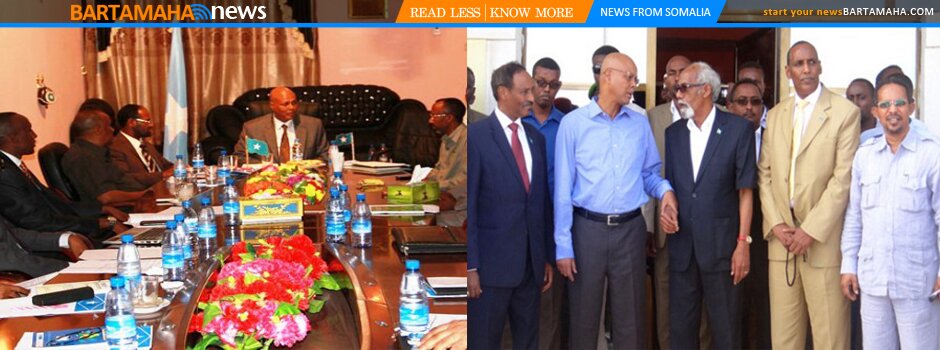Numbers count when estimating Somalis

Darsi Mohamed, 13, center, tutors Ashalul Aden, 7, left, and Rukia Aden, 6, as they read a book in a classroom at the Somali Community Associationof Ohio, 3422 Cleveland Ave.
(Columbus Dispatch) Past estimates of Franklin County’s Somali population have ranged from 30,000 to 80,000. But a new report says that it’s more like 15,000.
An accurate number helps government agencies funnel funds for social services – English classes, jobs programs, etc. – to specific groups.
“Is it possible we have a grant proposal that says 40,000 Somalis? Yes,” said Angie Plummer, executive director of Community Refugee and Immigration Services.
But she said that grant proposals must include the specific number of people an agency expects to serve with the funds. That means while a grant proposal might refer to a population estimate, it will ask for funds to serve a specific number.
No one could say how much money has flowed in to help Somalis based on population estimates.
Evelyn Bissonnette, Ohio’s refugee coordinator, said the federal government provides $850 per individual to put them in homes and pay for administrative costs. Ohio also received $6 million in federal funds for cash and medical assistance in 2008 for all refugees.
Community Research Partners, a local nonprofit research group, studied birth records, Columbus schools’ enrollment figures and recent census data to come up with the count for 2007.
If anything, the study shows how difficult it is to accurately count a growing immigrant population.
“Whether it’s 15,000 or 35,000, I don’t think anything’s definite,” said Jung Kim, director of data services for Community Research Partners. “It’s just to get the discussion going.”
Hassan Omar of the Somali Community Association of Ohio said the 15,000 figure is way too low: “It’s not even close.”
Omar’s estimate: 35,000 to 40,000.
The 40,000 number has been cited extensively for several years in the Somali community and the news media. Community Research Partners said a Somali community organization has reported a number as high as 80,000.
The 15,000 figure seems accurate, said Brian Harter, a spokesman for the Ohio Department of Job and Family Services, which oversees the state’s Refugee Services Section.
Plummer said her group has resettled about 4,500 Somali refugees over the years in central Ohio. She, too, thinks the 15,000 figure is low and doesn’t count Somalis who moved here from other parts of the country.
“I still think there are a lot more than 15,000 who would identify themselves as Somali; or Somali-American; or American, U.S.-born children to Somali parents,” Plummer said.
According to the U.S. Office of Refugee Resettlement, about 5,100 Somali refugees settled in Franklin County between 1995 and 2008.
Contracts with the county are performance-based, meaning the agency won’t get paid until people in jobs programs find work, Plummer said.
She said her agency received about $125,000 from the city last year. It also receives money from Franklin County.
Omar acknowledged it’s difficult to estimate the number of Somalis.
“People used to live in concentrated areas,” he said, including the Northern Lights area and the city’s Northeast Side near Morse Road and Cleveland Avenue. But many have moved to suburbs, including Hilliard and Westerville.
Somali refugees began coming to the United States in the 1990s to escape a country torn apart by warlords battling for control.
Columbus has long been considered home to the second-largest number of Somalis in the country, trailing only the Minneapolis-St. Paul area.
There, some estimates have run as high as 100,000.
But Barbara Ronningen, with the Minnesota State Demographic Center, said her research shows the whole state is home to just 40,000 Somalis, most in the Twin Cities area.
Communities stand to gain money and power by overestimating numbers, she said.
“If you can get people to believe you have 100,000, you’ll do better,” Ronningen said.
William Notz, an Ohio State University statistics professor, said he thinks Somalis might be underrepresented in the census sampling. But he said those who cite the larger numbers have to prove how they came up with them.
Kim’s study cites the advantages and disadvantages of the methodology he used to determine his estimates. For example, according to Columbus schools’ figures, the number of students whose native language is Somali rose from 320 in 2004 to 1,312 in 2007.
But the study did not include in the base count Somali students in suburban districts. Kim said he estimated those numbers based on Columbus schools.
Mussa Farah, president of Horn of Africa Community Center, a social-services group for Somalis, said the study also missed the students in charter schools.
Farah is working with the U.S. Census Bureau to spread the word in the community about the 2010 census and the importance of being counted.
Comments
comments
 Calendar
Calendar






































